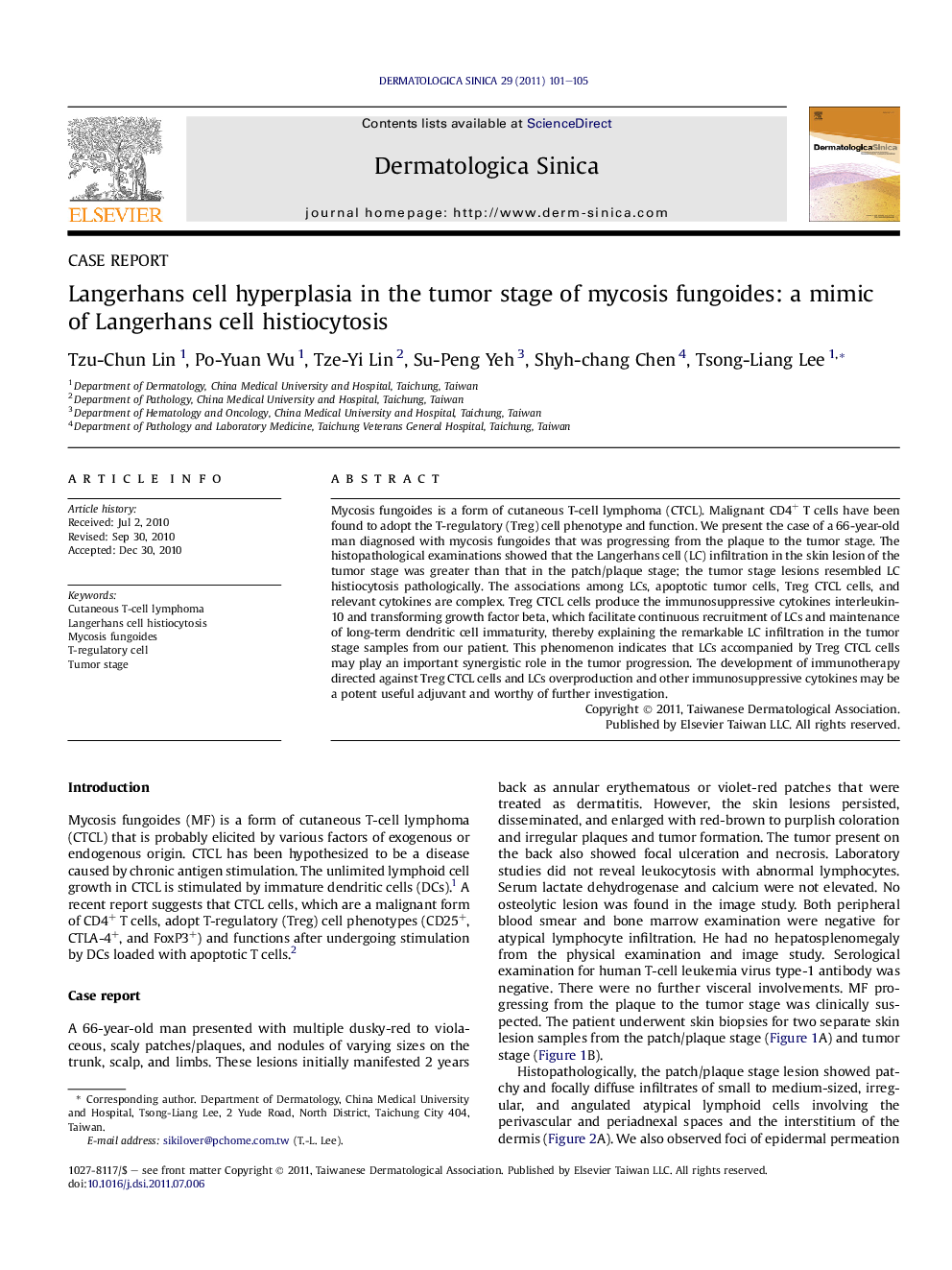| Article ID | Journal | Published Year | Pages | File Type |
|---|---|---|---|---|
| 3196616 | Dermatologica Sinica | 2011 | 5 Pages |
Mycosis fungoides is a form of cutaneous T-cell lymphoma (CTCL). Malignant CD4+ T cells have been found to adopt the T-regulatory (Treg) cell phenotype and function. We present the case of a 66-year-old man diagnosed with mycosis fungoides that was progressing from the plaque to the tumor stage. The histopathological examinations showed that the Langerhans cell (LC) infiltration in the skin lesion of the tumor stage was greater than that in the patch/plaque stage; the tumor stage lesions resembled LC histiocytosis pathologically. The associations among LCs, apoptotic tumor cells, Treg CTCL cells, and relevant cytokines are complex. Treg CTCL cells produce the immunosuppressive cytokines interleukin-10 and transforming growth factor beta, which facilitate continuous recruitment of LCs and maintenance of long-term dendritic cell immaturity, thereby explaining the remarkable LC infiltration in the tumor stage samples from our patient. This phenomenon indicates that LCs accompanied by Treg CTCL cells may play an important synergistic role in the tumor progression. The development of immunotherapy directed against Treg CTCL cells and LCs overproduction and other immunosuppressive cytokines may be a potent useful adjuvant and worthy of further investigation.
